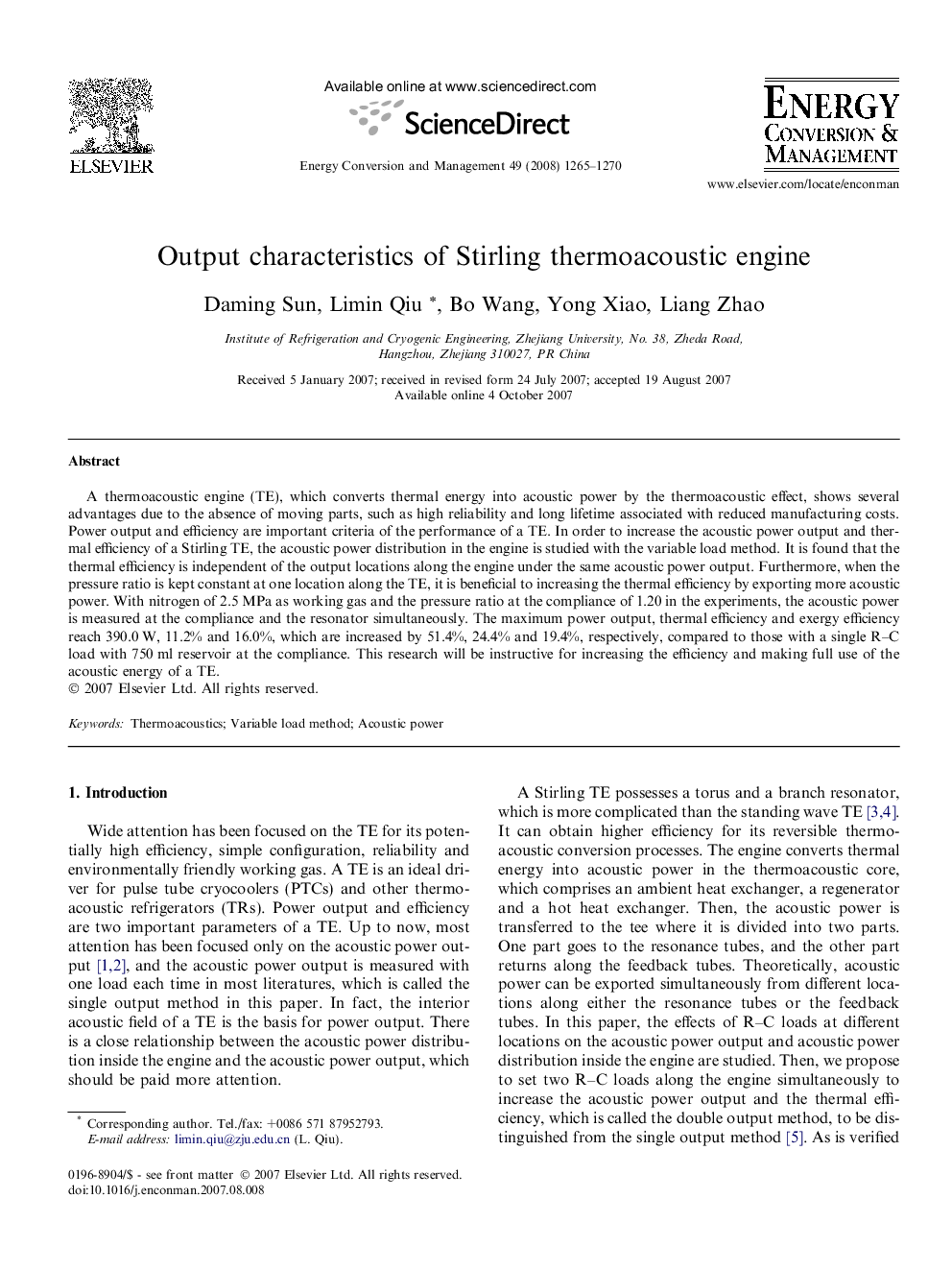| Article ID | Journal | Published Year | Pages | File Type |
|---|---|---|---|---|
| 765378 | Energy Conversion and Management | 2008 | 6 Pages |
A thermoacoustic engine (TE), which converts thermal energy into acoustic power by the thermoacoustic effect, shows several advantages due to the absence of moving parts, such as high reliability and long lifetime associated with reduced manufacturing costs. Power output and efficiency are important criteria of the performance of a TE. In order to increase the acoustic power output and thermal efficiency of a Stirling TE, the acoustic power distribution in the engine is studied with the variable load method. It is found that the thermal efficiency is independent of the output locations along the engine under the same acoustic power output. Furthermore, when the pressure ratio is kept constant at one location along the TE, it is beneficial to increasing the thermal efficiency by exporting more acoustic power. With nitrogen of 2.5 MPa as working gas and the pressure ratio at the compliance of 1.20 in the experiments, the acoustic power is measured at the compliance and the resonator simultaneously. The maximum power output, thermal efficiency and exergy efficiency reach 390.0 W, 11.2% and 16.0%, which are increased by 51.4%, 24.4% and 19.4%, respectively, compared to those with a single R–C load with 750 ml reservoir at the compliance. This research will be instructive for increasing the efficiency and making full use of the acoustic energy of a TE.
